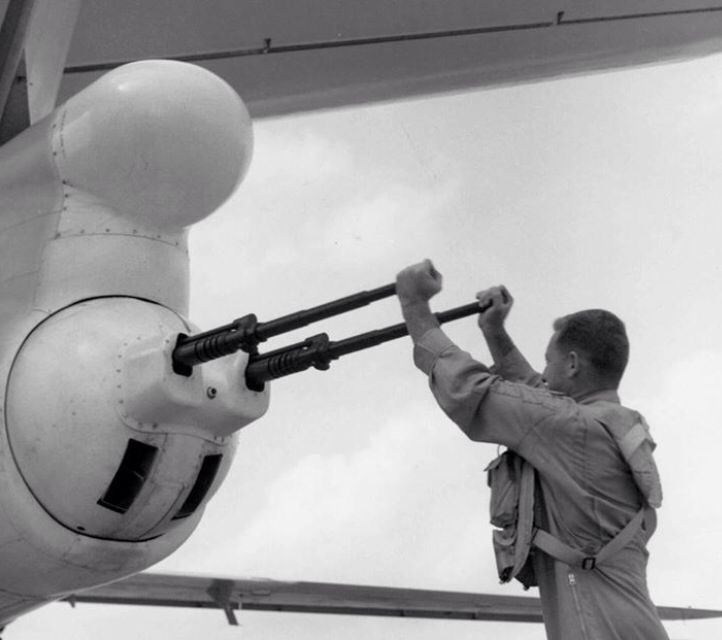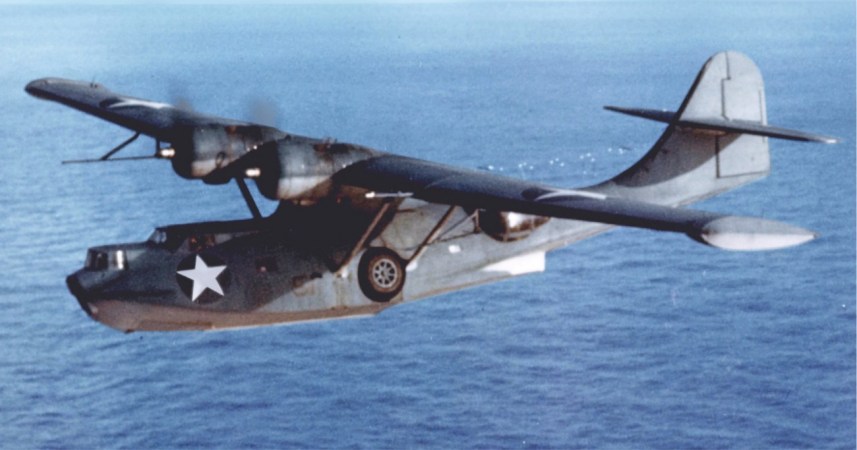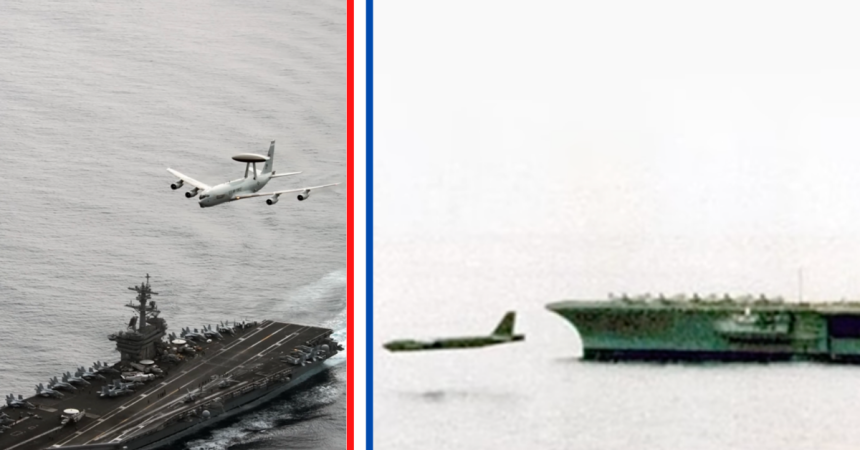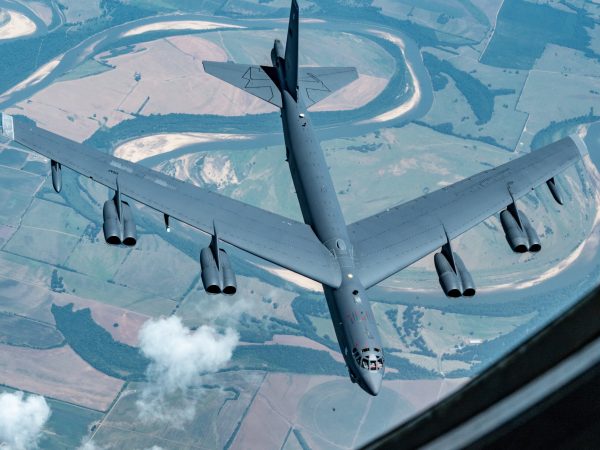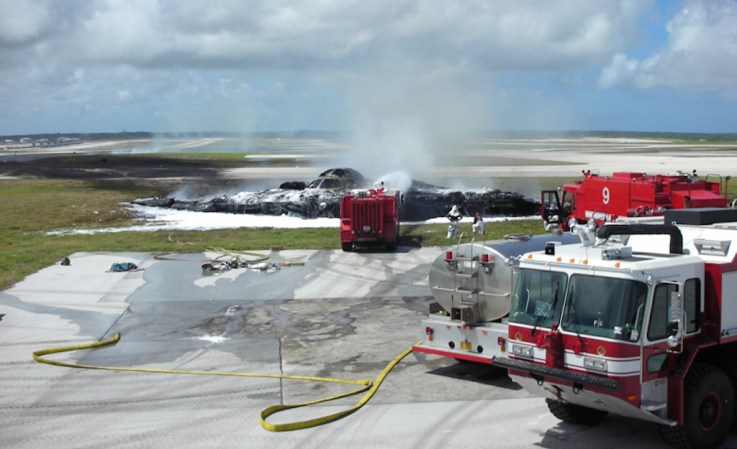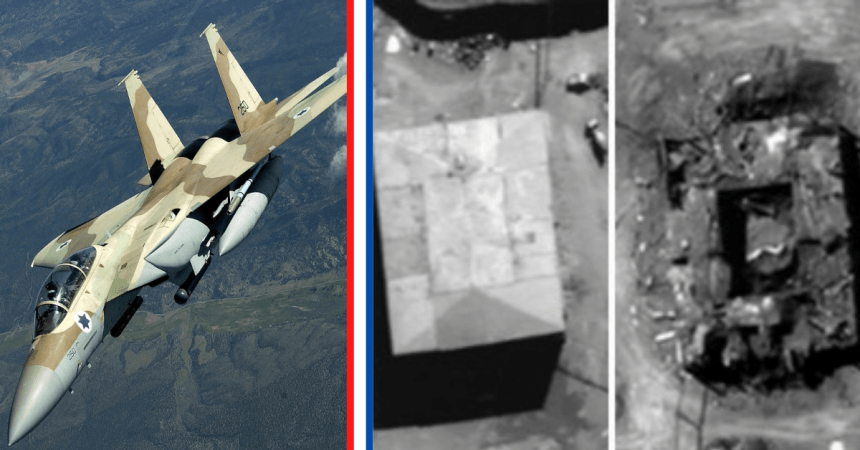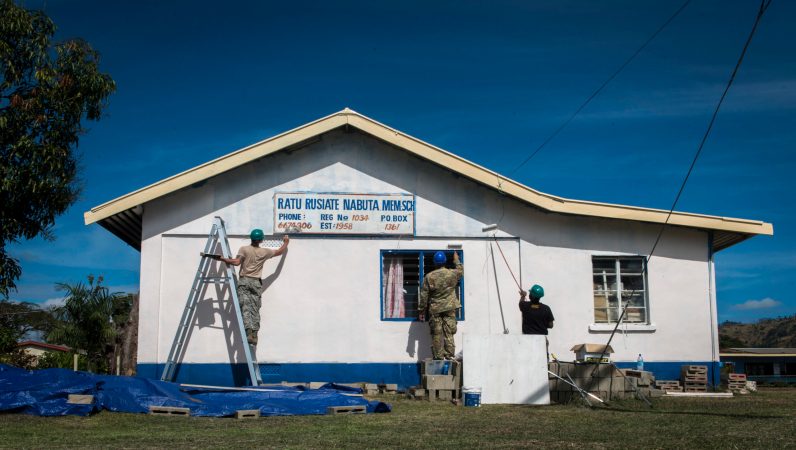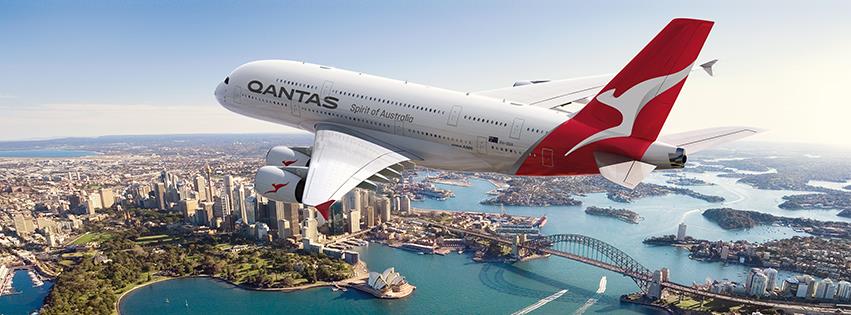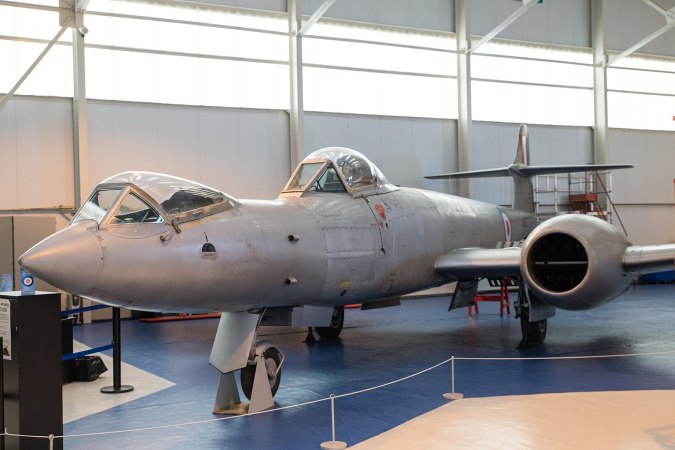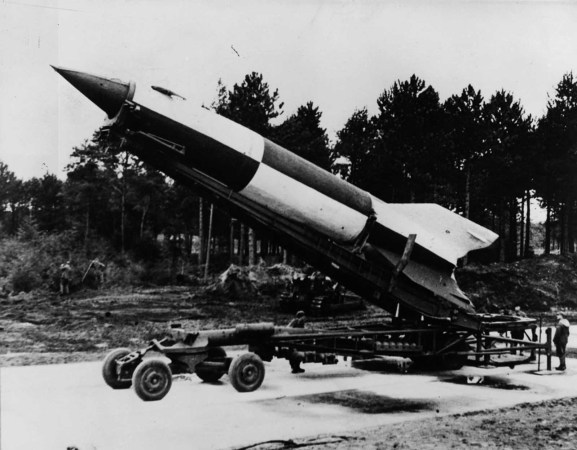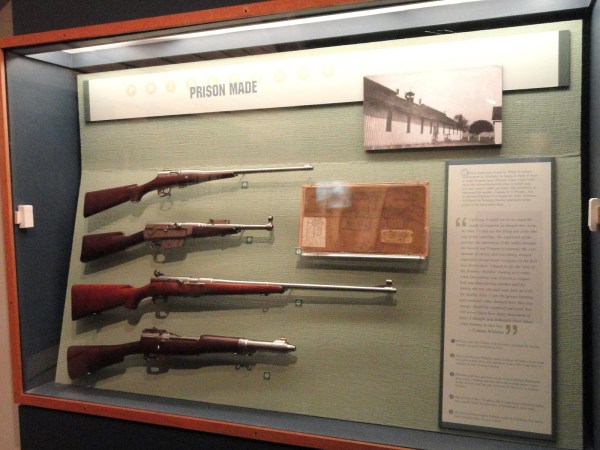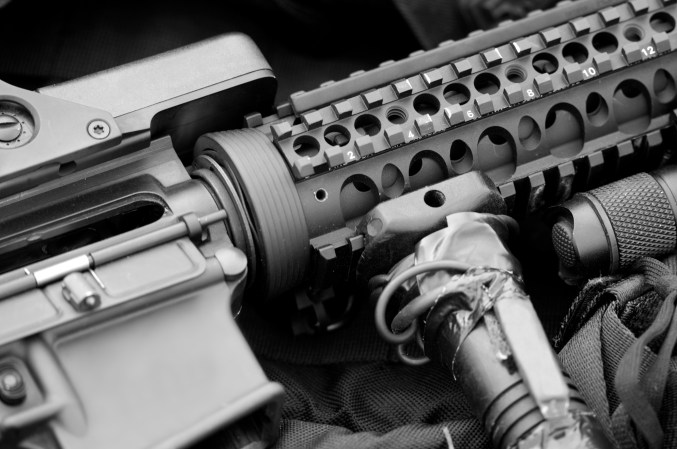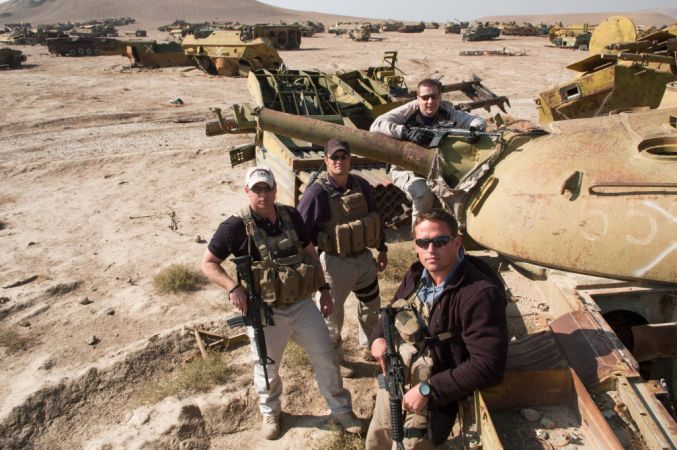During WWI, the airplane proved itself on the battlefield. Equipped with guns and bombs, planes could be employed against ground or aerial targets. To defend themselves against other aircraft, many warplanes were fitted with a tail gun to cover the 6 o’clock direction. While the weight of the position, gun and gunner reduced the plane’s speed and maneuverability, it added protection. Surprisingly, despite the advent of missiles and jet engines, the tail gun persisted on airplanes well into the late 20th century.

After WWII, with the emergence of nuclear war, the Navy sought to remain relevant with the ability to deliver nuclear weapons. In 1949, the Douglas Aircraft Company was awarded a contract to produce a carrier-based strategic jet bomber. Designated the A-3 Skywarrior, the massive aircraft was nicknamed “the whale” and could operate from the new Midway-class carriers with a maximum payload of 12,800 lb. To protect itself from enemy interceptors, the Skywarrior’s crew initially included a pilot, bombardier/navigator and a tail gunner. Sitting behind the pilot in a rear-facing seat, the gunner controlled a radar-guided, twin tail-mounted 20mm M3L cannon.

The A-3 entered service with the Navy in 1956. However, by the end of the decade, the Navy’s nuclear mission was moved on to ballistic missiles. Still, the Skywarrior remained relevant with its large payload. With modifications, the A-3 served as an aerial tanker, photo-reconnaissance aircraft and electronic warfare platform. In all configurations, the plane’s tail turret could be deleted to make room for electronic countermeasure equipment.

By the mid-1960s, the Navy abandoned its strategic bomber capability. From 1964-1967, the A-3 served as a bomber and minelayer in Vietnam as well as a tanker, recon plane and electronic warfare aircraft. With the introduction of more capable bombers, the A-3 was eventually phased out of its original bomber role. In its electronic warfare configuration, the EA-3 continued to serve through Operation Desert Storm. However, in September 1991, the aircraft was withdrawn from service.

Outside of the Navy, the A-3’s size made it useful as a test platform for civilian aircraft companies. Notably, the Hughes Aircraft Company used it to develop weapon systems for the General Dynamics-Grumman F-111B and the Grumman F-14 Tomcat. Westinghouse and Raytheon also used the A-3 as a test platform. After the Skywarrior was retired from the Navy, the service ended logistical support for the civilian companies. The A-3 continued to serve as a test aircraft until the mid-1990s. On June 30, 2011, the last flyable EA3, a Raytheon aircraft, landed at Naval Air Station Pensacola to retire and be displayed at the National Naval Aviation Museum.


